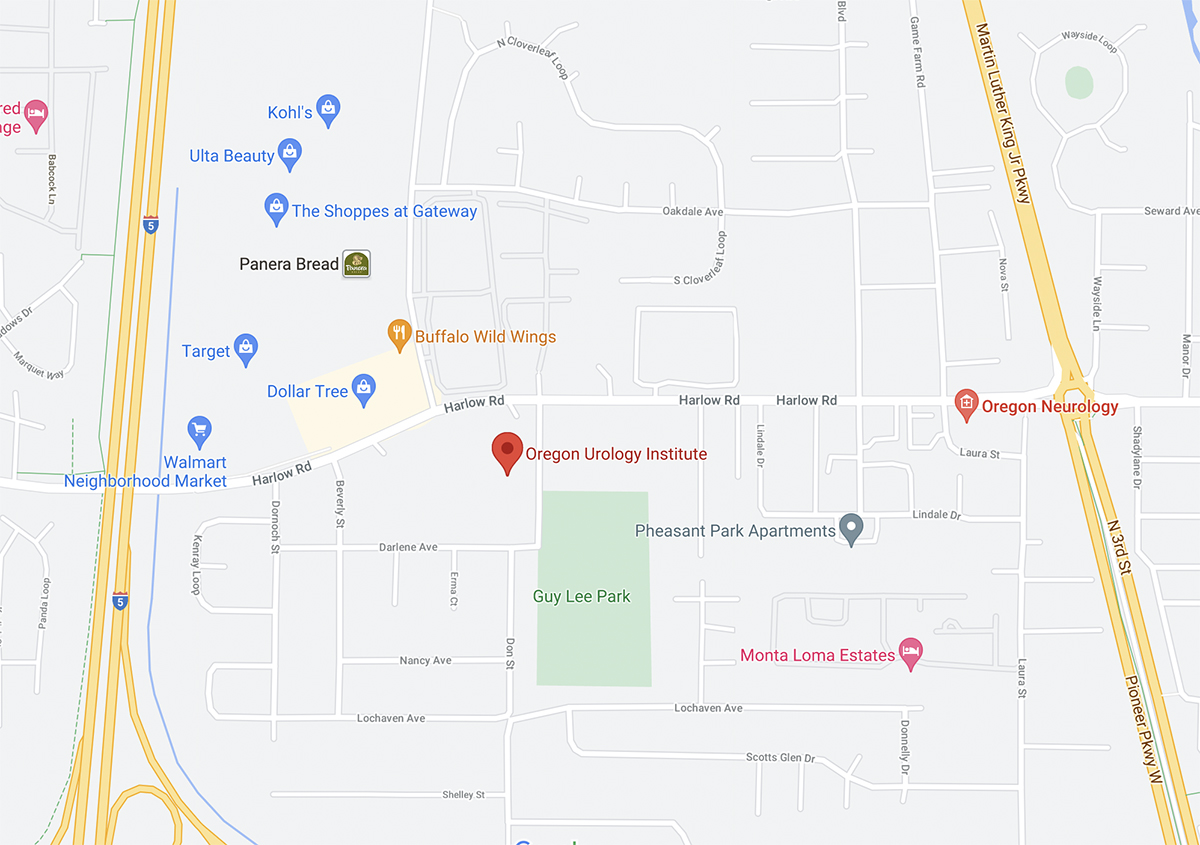ENLARGED PROSTATE

WHAT IS AN ENLARGED PROSTATE?
Benign prostatic hyperplasia (BPH) is a non-cancerous condition that involves the enlargement of the prostate gland as men age. The prostate gland is a small, walnut-sized gland just below the bladder that plays an important role in the male reproductive system.
The primary function of the prostate is to produce a fluid that, together with sperm cells from the testicles, makes up semen. This prostatic fluid contributes to sperm motility and viability.
BPH is not prostate cancer. In fact, the term “benign” indicates that the condition is not cancerous and is generally considered harmless. However, though BPH is benign, it is a condition that can lead to uncomfortable urinary symptoms that can significantly affect a man’s quality of life.


ENLARGED PROSTATE SYMPTOMS
Symptoms of an enlarged prostate can vary greatly in severity. Some common indicators include:
- Urinary frequency: The need to urinate more often than usual, especially at night. This condition is known as nocturia, and happens due to the prostate pressing against the bladder.
- Urinary urgency: Urgency is a sudden, compelling urge to urinate, which can be hard to control.
- Difficulty starting urination: Known as hesitancy, it occurs when there’s a delay or difficulty in starting the urine flow despite feeling the need to urinate.
- Weak urine stream: A weakened flow or stream of urine may start and stop intermittently.
- Dribbling at the end of urinating: Leakage or an involuntary dribbling of urine after emptying your bladder.
- Incomplete bladder emptying: After urinating, a sensation of the bladder being partially emptied occurs. This feeling can lead to an increased urination frequency.
ENLARGED PROSTATE CAUSES
The exact cause of BPH is not fully understood, but age is a primary risk factor. The incidence of BPH increases as men get older, particularly over the age of 50. Other factors include:
- A family history of BPH may increase the likelihood of developing the condition.
- Carrying extra weight, lack of physical activity, and diet may influence the development of BPH.
- Changes in hormone levels as men age may also play a role.
TREATMENT FOR AN ENLARGED PROSTATE
Treatment for BPH involves methods to relieve symptoms and improve urinary flow.
BPH Medications
Alpha-blockers
Alpha-blockers are medications that specifically target the smooth muscles of the prostate and bladder neck, relaxing them. This relaxation makes passing urine easier by reducing the tightness around the urethra. These medications typically work quickly, often relieving symptoms within days or weeks. However, they do not reduce the size of the prostate and may have side effects such as dizziness, fatigue, and a decrease in blood pressure.
Commonly prescribed alpha-blockers for BPH include:
- tamsulosin (Flomax)
- alfuzosin (Uroxatral)
- doxazosin (Cardura)
- silodosin (Rapaflo)
5-alpha-reductase inhibitors
5-alpha-reductase inhibitors target the enzyme 5-alpha-reductase, which converts testosterone to dihydrotestosterone (DHT), a hormone that contributes to prostate growth. By blocking this enzyme, these drugs reduce the production of DHT, leading to a shrinkage of the prostate over time. They may also lower the risk of acute urinary retention and the need for prostate surgery for some men. 5-alpha-reductase inhibitors may take longer to show effects on symptoms, often several months, and can have side effects such as decreased libido, erectile dysfunction, and a decrease in semen volume. Examples of 5-alpha-reductase inhibitors include:
- finasteride (Proscar)
- dutasteride (Avodart)
In some cases, a combination of an alpha-blocker and a 5-alpha-reductase inhibitor may be prescribed for a collaborative effect, especially in men with a significantly enlarged prostate and more severe symptoms.
Minimally Invasive Procedures
Minimally invasive procedures for BPH aim to relieve symptoms with less pain, quicker recovery, and minimal disruption to daily life, including:
- UroLift – Implants are placed to lift and hold prostate tissue away from the urethra, improving urine flow
- Rezum – Water vapor (steam) is used to destroy excess prostate tissue
- GreenLight Laser Therapy – A specialized laser is used to remove any prostate tissue that is blocking the urethra
Surgery
When other treatments haven’t helped resolve BPH symptoms, surgery may be considered. One of the most common procedures is called transurethral resection of the prostate (TURP). During the procedure, the urologist removes excess prostate tissue with a laser or traditional surgical instruments.
CHOOSING THE RIGHT TREATMENT
The choice of treatment depends on several factors, including:
- Symptom severity
- Prostate size
- Underlying health conditions
- Your preferences
Call 541-334-3350 today to schedule an appointment to talk with a urologist about the best treatment for you so that you can get relief from your frustrating urinary symptoms.
FAQs
What is BPH in medical terms?
BPH, in medical terms, is benign prostatic hyperplasia, meaning:
- Benign: harmless
- Prostatic: affecting the prostate gland
- Hyperplasia: an increased growth of cells in normal tissue
Can BPH cause ED?
Yes, BPH can be associated with erectile dysfunction (ED). While BPH itself does not directly cause ED, the symptoms of BPH and the stress and discomfort they bring can affect sexual function. Additionally, some medications used to treat BPH, particularly alpha-blockers, can have side effects that impact erectile function.
What is the best treatment for enlarged prostate?
The best treatment for an enlarged prostate depends on symptoms, overall health, and personal preferences. Treatment options may include medications, minimally invasive procedures, or surgery.






